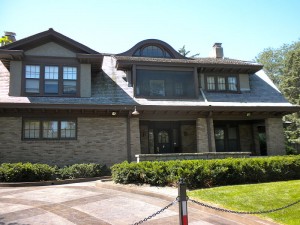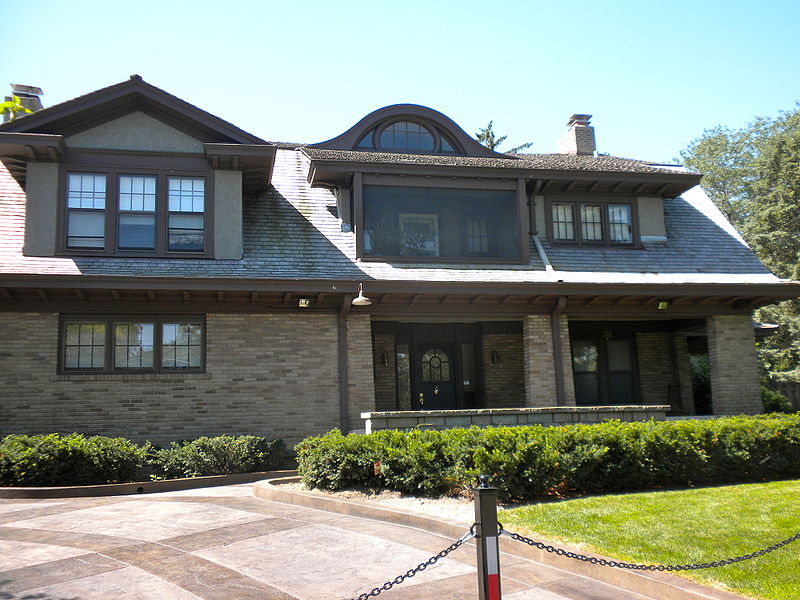
When Warren Buffett was 26 years old, he had, in inflation-adjusted terms, a personal net worth of $1,358,200 plus he was managing the equivalent of $2,186,700 in three hedge funds upon which he received a profit override. He ran the partnerships from a study off the side of his bedroom in the home in Omaha, Nebraska he bought in the 1950's. He also managed money for a few other people and had a partnership with his father in which he didn't take a fee. By the time he was 28 or 29, he was managing seven partnerships with far more money, plus a partnership with his father called Buffett & Buffett.
I’ve been thinking a lot lately about Buffett Associates, Ltd., which is the most famous and first “real” professional investment partnership that Warren Buffett established on May 1st, 1956 after he returned to Omaha following his time working for Benjamin Graham at the Graham-Newman Corporation. He was 25 at the time (would turn 26 that August). Buffett couldn’t stand people criticizing him if stocks went down so he only invited his friends and family into the first partnership. The starting capital accounts and partners were as follows:
- Doc Thompson, Buffett’s father-in-law, contributed $25,000. That is $195,140 today.
- Dorris Buffett, Warren’s sister, and her husband contributed $10,000. That is $78,056 today.
- Aunt Alice Buffett contributed $35,000, which is $273,200 today.
- Chuck Peterson, Warren’s roommate during his ill-fated years at Wharton before he left that school, contributed $5,000, which is $39,028 today.
- Elizabeth Peterson, Chuck Peterson’s mother, contributed $25,000 she inherited after her husband died the year before, which is $195,140 today.
- Dan Monen, a childhood friend of Warren’s, contributed $5,000, which is $39,028 today.
- Warren himself kicked in $100, which is $781 today.
The entire Buffett Associates, Ltd. partnership had $105,100 in capital, which is roughly $820,373 today. He had six partners plus himself, which brought the total to seven people.
The compensation formula was simple. The investors received 4% interest on their money from the partnership. After that threshold, Buffett got 50% of the gain and the limited partners got the other 50%. If there were a loss, Buffett took 25% of it himself. That means if he broke even, he lost money. His obligation to pay back losses was not limited to his capital; it was unlimited.
A Few Months After Buffett Associates, Ltd. Came Buffett Fund, Ltd.
[mainbodyad]According to the Buffett biography by Alice Schroeder, Buffett had already been managing money for people. Specifically, he had been investing conservatively in government bonds for a small, modest fee for Anne Gottschaldt and Catherine Elberfeld, the mother and aunt of Fred Kuhlken, one of Warren’s friends from Columbia. He didn’t invite either of them into the partnership because he felt like it would be a higher fee structure. On the other hand, even accounting for that, those two women would have become much richer by investing in Buffett Associates, Ltd.
Buffett also had a little partnership with his father, called Buffett & Buffett, on which he charged no fee.
It was in the years that followed that Warren started establishing other investment partnerships. On September 1st, 1956, he raised $120,000 from Homer Dodge, a physics professor who had attended Harvard University. That is almost $937,000 in today’s money. With it, Buffett setup Buffett Fund, Ltd. This second fund had more money than the Buffett Associates, Ltd. partnership.
Then Came the B-C Partnership
Then, in October 1, 1956, Warren founded another partnership for a friend of his, John Cleary, who was his father’s secretary in Congress. (Buffett’s father served in the House of Representatives.) It had $55,000 in capital, which is the equivalent of $429,300 today.
To summarize, he was definitely off to a good start. At 26, Warren Buffett was the son of a United States Congressman, he had an MBA from Columbia University, had already worked for the legendary Benjamin Graham, had $1,358,200 in inflation-adjusted investments in his own portfolio, plus he was managing $2,186,700 in inflation-adjusted terms of other peoples’ money that he got an override on depending upon performance. That is a very good basis upon which to build a career if you have the skills of someone like Warren Buffett. The next year, he raised even more money …
The Underwood Partnership
In June of 1957, Buffett started another partnership called Underwood, which was setup by one of the original partners of Buffett Associates, Ltd., Elizabeth Peters, with $85,000. Today, that is $640,500.
Then Came the Dacee Partnership
It wasn’t until next year, on August 5, 1957, that Buffett started what was actually his fifth partnership, excluding Buffett & Buffett with his father, which was called Dacee. Eddie Davis and his wife Dorothy Davis had Buffett manage $100,000 for themselves and their three children. In today’s dollars, that is $753,400 or so in today’s inflation-adjusted dollars.
The Mo-Buff Partnership
On May 5, 1958, Dan Monen and his wife, Mary Ellen, formed the basis of Warren’s next partnership, called Mo-Buff. They put in $70,000. That is $527,400 today.
The Glenoff Partnership
[mainbodyad]The seventh Buffett partnership (again excluding the Buffett & Buffett he had with his father), was called Glenoff, and consisted of $50,000 contributed by a local businessman and two sons in one of Omaha’s most prominent families. It was established in February of 1959. Today, that is $364,000.
The thing is, by mid-way through 1959, Buffett, who had only contributed $100 to each partnership, had earned fees, counting reinvested earnings, of $83,085 and owned approximately 9.5% of the combined partnerships due to his performance. That is about $605,000 today. Not bad! Plus, of course, he still had his personal investments.
That means, by the time he was about to turn 30, he was managing almost $7,300,000 in today’s money, had his personal investments, managed Buffett & Buffett with his father, and some other side commitments.



